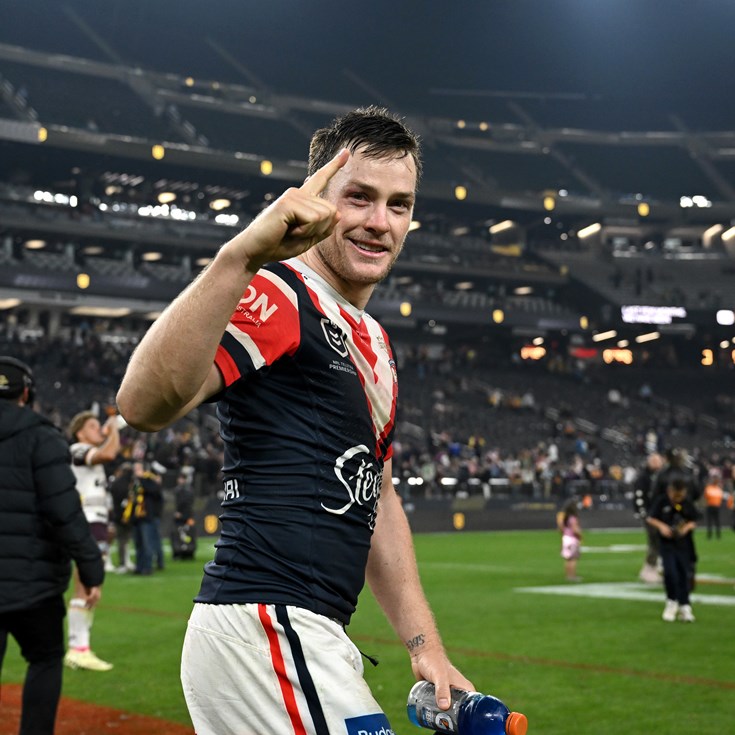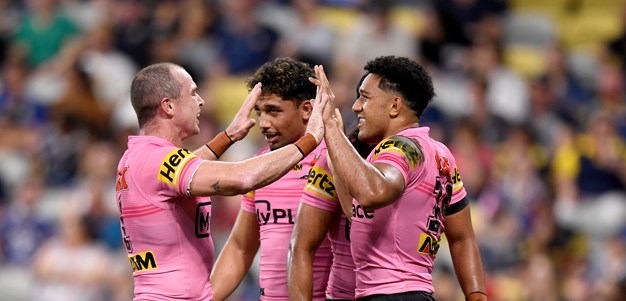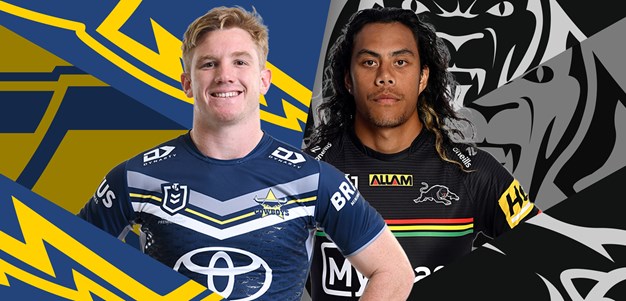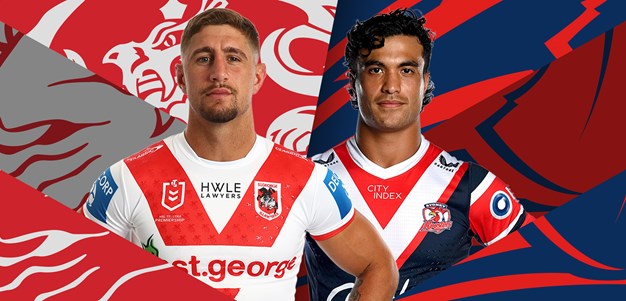NRL head of football Graham Annesley has warned that a return to black-and-white rulings on obstruction would encourage diving by defenders in the hope of having a try disallowed.
Annesley believes that a try by Sydney Roosters centre Joey Manu during last Thursday night’s 22-16 loss to Penrith should not have been overturned, but he insisted that review officials needed to use their judgement on obstruction calls.
Referee Adam Gee awarded the try but he asked bunker official Chris Butler to review a collision between Roosters prop Jared Waerea-Hargreaves and Panthers fullback Dylan Edwards in back play.
Joey Manu try overturned for obstruction
The incident occurred about five metres from the goal posts after Edwards swerved around Gee into the path of Waerea-Hargreaves but because Gee had covered most of the ground to where Manu crossed out wide, Butler decided Edwards may have too.
“This is a typical example of where the bunker official will have to use judgment and form an opinion as to whether that particular player who was involved in the collision would have been able to get to the ball carrier in an attempt to prevent the try from being scored,” Annesley said.
“Now, would he have got there to prevent the try from being scored? We will never know because he didn't have the opportunity to do that, but the bunker formed an opinion and he [Edwards] is obviously a very, very quick player.
“In my view, I think there's too much of an element of doubt because of the distance involved and the fact of where the try was scored, but that's my opinion.
“We also have to make a determination, and my determination is that the try should have stood, particularly when it was awarded as a try on the field.
“For the bunker to overturn it they have to believe that the original decision of try was the incorrect decision. I don't think that there's enough evidence to warrant that.”
Time-off was ruled correctly
However, Annesley said that calls for a return to black-and-white determinations, which were in place when guidelines on obstruction were first drawn up 11 years ago, would be a backwards step.
Until 2013, referees had ruled on obstructions but in a bid to ensure consistency black-and-white interpretations were introduced so that coaches and players understood what was illegal and what was allowed.
However, that sparked further controversy about defenders diving to “milk” penalties for obstruction.
Our position hasn't changed on hip-drops
Match officials still rely on a series of indicators for obstruction but they have the ability to determine if the incident would have had any impact on a try being scored.
“If we make these decisions completely black-and-white, or too black-and-white, then that encourages milking because players will say, ‘I'm not going to get there, so I'm just going to run into a lead runner and that way there's a fair chance that the try will be disallowed’,” Annesley said.
“There's enough milking that goes on in our game because the job of players and coaches is to try and win, so that’s been part of our game for a long time, but we don't want to be creating any incentive for milking.
“I'm not saying for a moment that Dylan Edwards is trying to milk, but because he is a long way from the ball when the collision takes place, another player in a similar position might.
“We've got to make sure that that is not an incentive to milk.”





